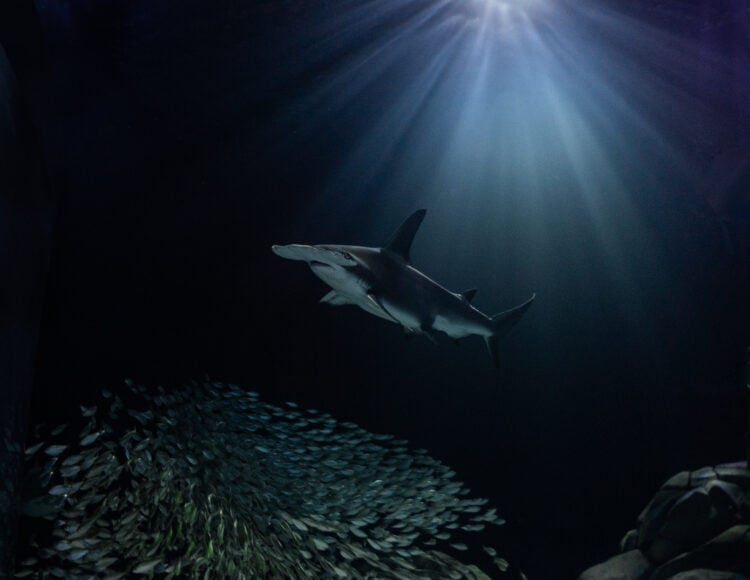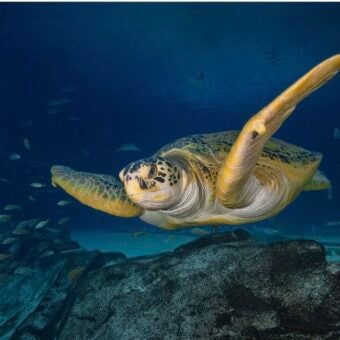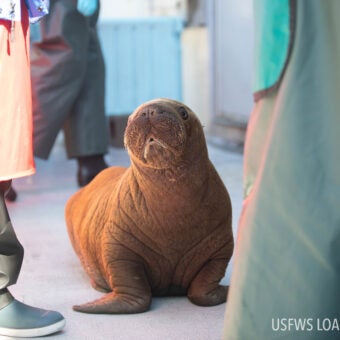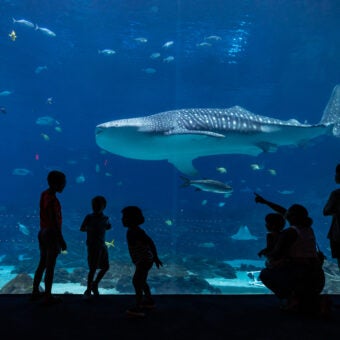Sharks are a unique species that tend to evoke fear and fascination in equal measure. But how dangerous are they to humans? Let’s dive deeper to understand the reality of shark attacks, the reasons behind them, and the conservation efforts in place to protect these magnificent creatures. Kelly Link, associate curator of fish & invertebrates at Georgia Aquarium, answers the most asked shark questions below:
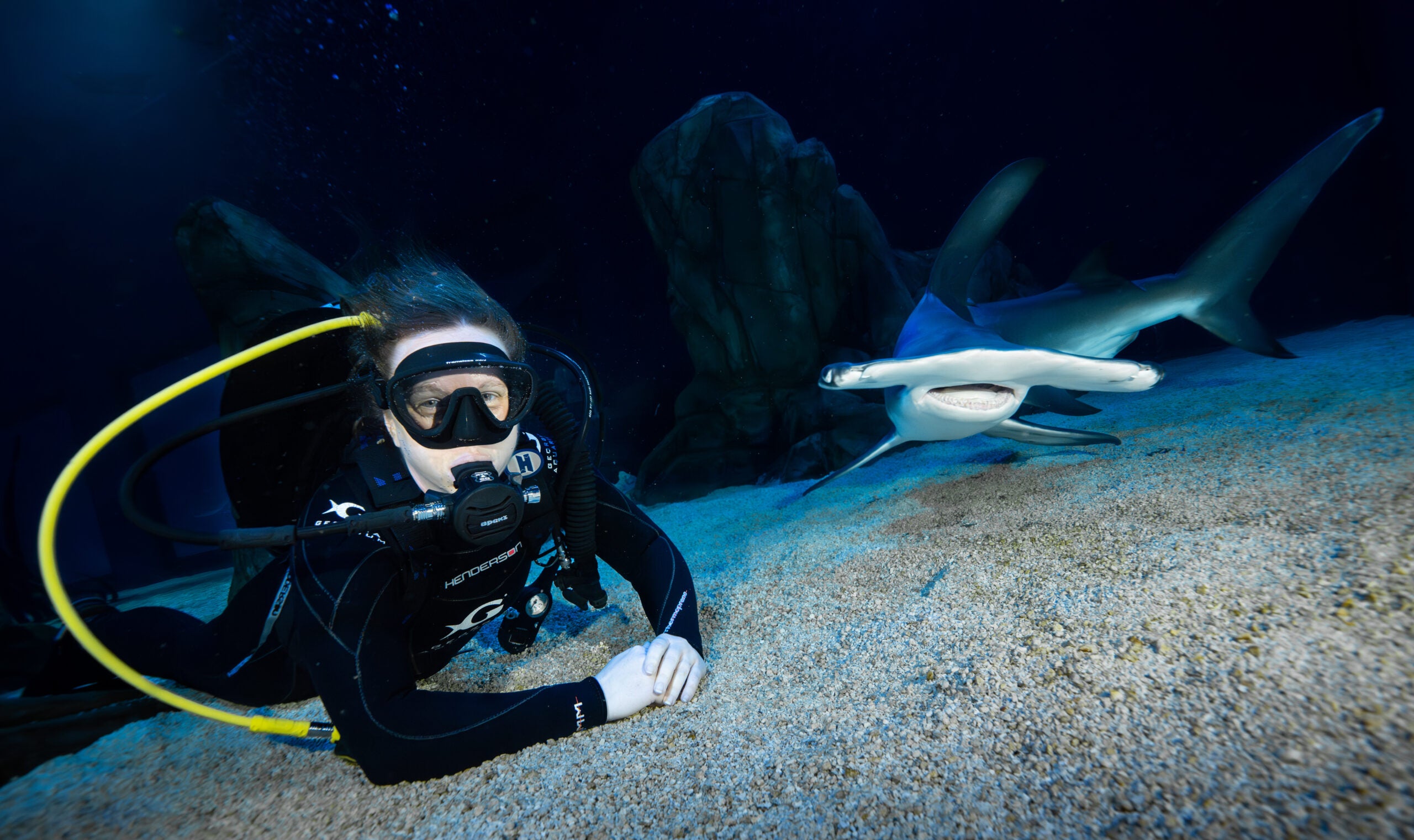
Are Sharks Dangerous to Humans?
Sharks are one of the ocean’s top apex predators and can be dangerous. Negative encounters do happen, but the likelihood is extremely low. In fact, you are more likely to win an Olympic medal, be struck by lightning, or be killed by a falling coconut. Sharks are not naturally interested in humans and do not see us as prey. Most interactions occur due to mistaken identity or curiosity rather than a predatory drive.
Why Do Sharks Attack Humans?
Human-related shark attacks are primarily cases of mistaken identity or exploratory behavior. For example, a shark might mistake a person on a surfboard for a sea turtle, or a swimmer for a sea otter. Since sharks lack hands, they use their mouths to investigate objects, which can sometimes result in a bite.
How Common Are Shark Attacks?
Shark attacks are incredibly rare. On average, there are about 60-65 unprovoked shark bites each year worldwide. Unprovoked bites occur without any human action that might incite the shark. Unlike provoked bites, where humans harass or attempt to feed sharks then, causing a shark to react. Of these bites, only about six a year are fatal. Considering the millions of people who enter the oceans every summer, the chances of encountering a shark are minimal. Statistically, a person is more likely to be hit by an asteroid than killed by a shark.
When Are Shark Attacks Most Likely to Happen?
While sharks can be active at any time of day, most attacks occur early in the morning or near sunset. To further reduce the chances of a shark encounter, avoid swimming during these times.
Which Shark Species Are Most Dangerous?
The great white shark, tiger shark, and bull shark are all considered the most dangerous to humans. Great whites and tiger sharks can grow quite large and are equipped with impressively powerful jaws. However, bull sharks can swim in both fresh and saltwater and are known to swim up rivers, increasing the chances of coming into contact with people.
Where Do Most Shark Attacks Occur?
Sharks follow their food, so they go where the fish go. Therefore, most shark encounters happen in inshore or near-shore waters, near sandbars, or steep drop-offs where sharks follow their prey.
How Can Shark Attacks Be Prevented?
To minimize the risk of a shark encounter, consider the following tips:
– Be aware of your surroundings and stay close to shore.
– Swim in groups and avoid areas where people are fishing.
– Steer clear of murky water or waters with signs of bait fish.
– Avoid excessive splashing, which can attract sharks.
What Should You Do If You See a Shark While Swimming?
If you see a shark, stay calm and keep an eye on it while slowly and calmly moving away. Do not panic or splash excessively. Exit the water when it is safe to do so.
What Should You Do If You Get Attacked by a Shark?
In the unlikely event of a shark attack, aim to hit the shark in its sensitive areas, like the eyes or gills. Be aggressive in your efforts to free yourself and exit the water as quickly as possible once released.
Common Myths and Misconceptions About Sharks
Myth: Sharks are mindless man-eaters.
Reality: Sharks can actually be pretty picky about what they eat. They have varied diets, including mammals, fish, and invertebrates, but humans are not on their menu. Far from mindless, many sharks actually have fairly large brains—they are smart and curious with complex social behaviors.
Myth: All sharks are the same.
Reality: There are over 500 species of sharks, ranging from the tiny dwarf lantern shark, which is no more than 6 inches in length, to the massive whale shark, which can reach up to 60 feet in length.
Myth: Sharks can smell a single drop of blood from across the ocean.
Reality: While sharks have excellent olfactory systems, a single drop of blood will not attract them from far away.
Myth: Sharks must keep swimming, or they will drown.
Reality: Some sharks, like the white shark, need to keep swimming to breathe. This is because they are ram-ventilating, which means they need to swim continuously to push water over their gills. In contrast, buccal-pumping sharks, like the zebra shark, can actively pump water over their gills with their mouths. These sharks are able to lay on the bottom of the ocean.
What Role Do Sharks Play in the Ocean Ecosystem?
Sharks are apex predators, crucial for maintaining the balance in marine ecosystems. By regulating prey populations, they help prevent the overgrowth of algae on coral reefs and ensure the health of the ocean environment. The ecosystem is a delicate balance that can be easily thrown off when one piece is removed.
Do Sharks Have Natural Predators?
Yes, many sharks are both predators and prey. Larger sharks can prey on smaller ones, and young sharks can fall prey to larger fish like groupers or jacks. Even apex predators like great whites can be hunted by orcas. However, humans are considered to be the biggest predators on the planet and pose a much greater threat to sharks than they do to us.
The Status of Shark Populations
Shark populations are in decline, with over 100 million sharks killed each year, primarily for their fins. Overfishing has led to a 70% reduction in shark populations globally, with around one-third of shark species threatened with extinction.
Conservation Efforts for Sharks
Efforts to protect sharks range from personal actions to international collaboration:
Personal Level: Consuming sustainable seafood, avoiding shark fin products, reducing
carbon footprints, and educating others about sharks.
Government Actions: Creating Marine Protected Areas and Shark Sanctuaries, banning
shark finning, and regulating shark trade.
International Cooperation: The Convention on International Trade in Endangered
Species (CITES) and the UN High Seas Treaty aim to protect sharks across borders and
international waters.
Studying Sharks and Their Behavior
Scientists study sharks using various methods, including tagging and tracking, underwater recordings, aerial surveys, and environmental DNA analysis. Facilities like Georgia Aquarium contribute to this research by observing shark behaviors and facilitating conservation projects:
Georgia Aquarium’s sharks can help expand the knowledge about shark species in many ways. Our whale sharks were part of a project to sequence the full genome of the whale shark, the first project of its kind on sharks. We can observe feeding and mating behaviors that might be difficult to see in the ocean. We can also track morphometric changes over time to understand how quickly shark species grow and mature. Along with gestational data to help understand the duration and challenges of pregnancies. Our sharks and rays can also help researchers prepare for work in the field. One of our manta rays allowed researchers to test a suction cup tag that could be deployed on wild mantas. Blood draw techniques learned from our whale sharks allowed our team to get blood from wild whale sharks in Indonesia. Georgia Aquarium and many other partners are part of the StAR project in Indonesia. The aim of this ambitious project is to repopulate the reefs in Raja Ampat, Indonesia, with zebra sharks bred from animals in aquariums around the world. The goal is to raise and release 100 sharks per year to establish a self-sustaining population of zebra sharks.
In conclusion, while sharks can be dangerous, the risk they pose to humans is minimal. By understanding and respecting these incredible creatures, we can coexist with them while ensuring their conservation for future generations.
Georgia Aquarium is one of the largest aquariums in the world with more than 11 million gallons of water and tens of thousands of animals. Located in Atlanta, Ga., it is a premier animal care and research facility that is accredited by the Association of Zoos and Aquarium, the Alliance of Marine Mammal Parks and Attractions, Humane Certified by American Humane, and a Class R research institution certified by the USDA. By providing guests with unparalleled opportunities to learn about marine life, Georgia Aquarium is dedicated to unlocking the ocean’s wonder for all, providing transformative experiences that inspire a shared responsibility for conserving our aquatic ecosystems.

